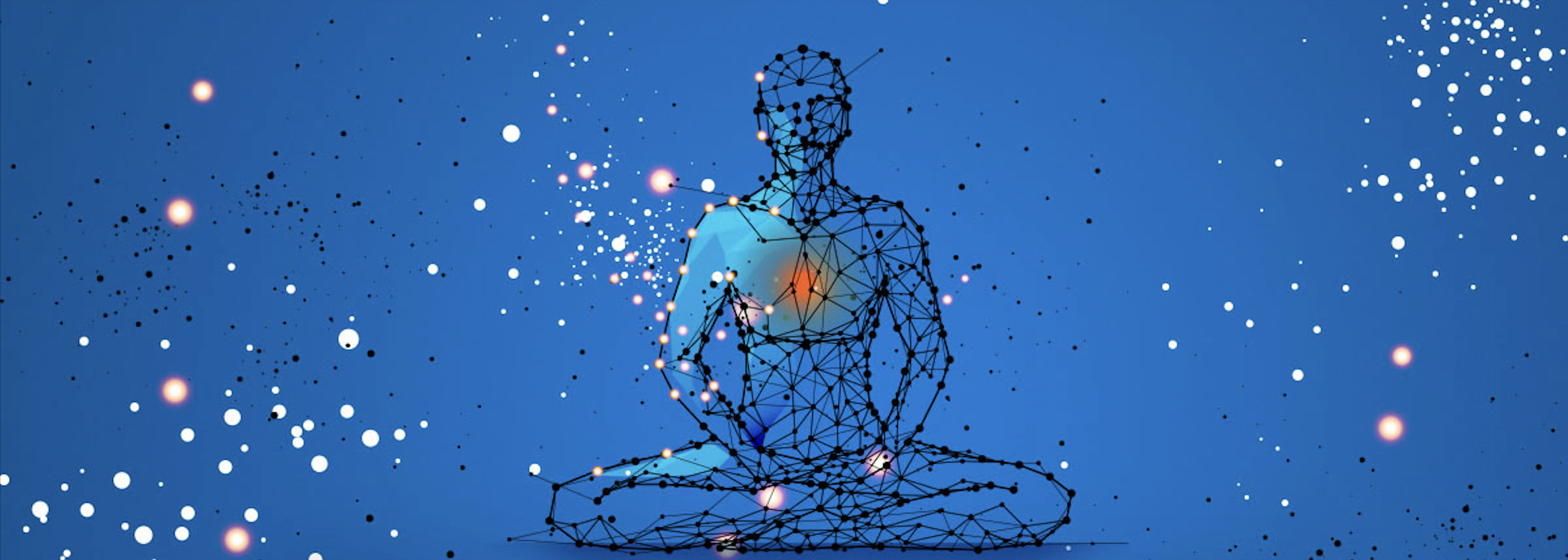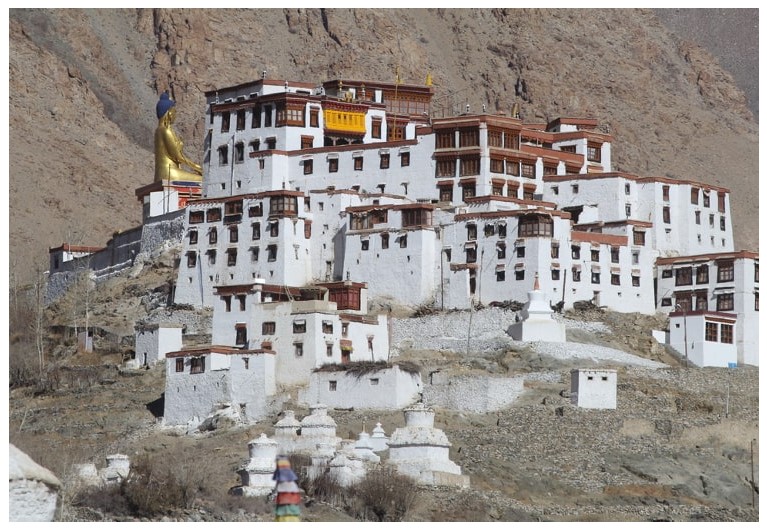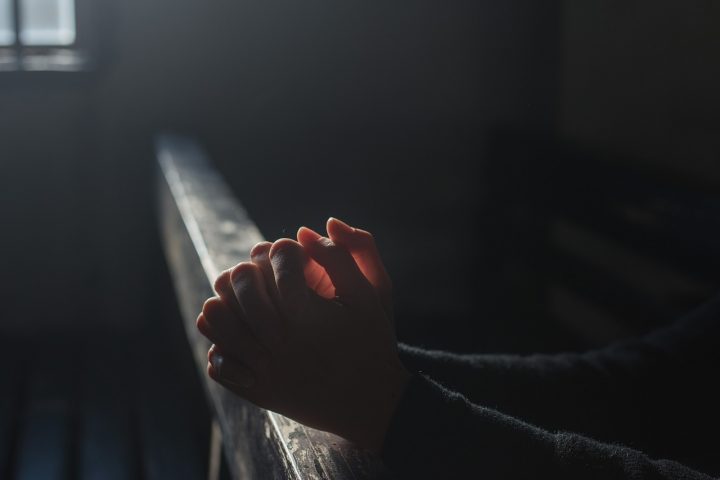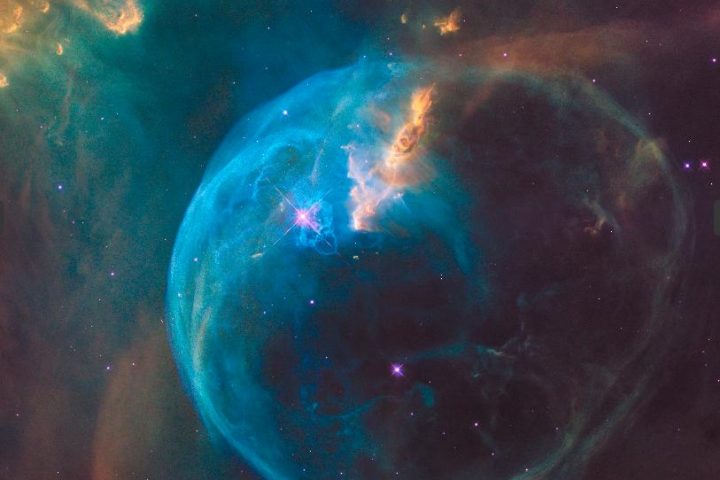Buddhism is the fourth-largest religion practiced in the world. But, do you know that it found its roots in ancient India and made its way to Asia through the Silk road (a trade route of ancient Chinese civilization)? Yes, the earliest found evidence of Buddhism is from India, where still a section of people practice it religiously. In this article, we will look at the top 10 Buddhist Monasteries in Ladakh, India.
Home to the desert and two-humped camels, Ladakh is situated in the Northern part of India. This high-altitude town is resting in the abode of the mighty Himalayas and extends to the mega Siachen Glacier. The local population is broadly dispersed in different parts of the region just like the Buddhist monasteries and gompas that are situated in remote and isolated locations. Ladakh is known for its breathtaking valleys and diverse culture.
The enormous mountains and steep roads have witnessed Buddhism flourish in the area and various monasteries and stupas are living examples of it. Buddhism made its way in Ladakh during the rule of Emperor Asoka in the 1st or 2nd century AD who ordered his people to visit the area and spread the teachings of Lord Buddha. However, it was not until the 7th century when Ladakh became part of the Tibetan empire, and then Buddhism was accepted by many and became a prominent part of the lives of the locals.
It was during the time of the 12th century that the construction of Monasteries began under the management of the Kadampa subgroup. Some of the earliest established monasteries during this period were Likir, Thiksey, and Spituk, which we have discussed in detail in the next section.
Let us now take a look at some of the famous Buddhist Monasteries of Ladakh.
Top 10 Buddhist Monasteries to visit in Ladakh
Hemis Monastery
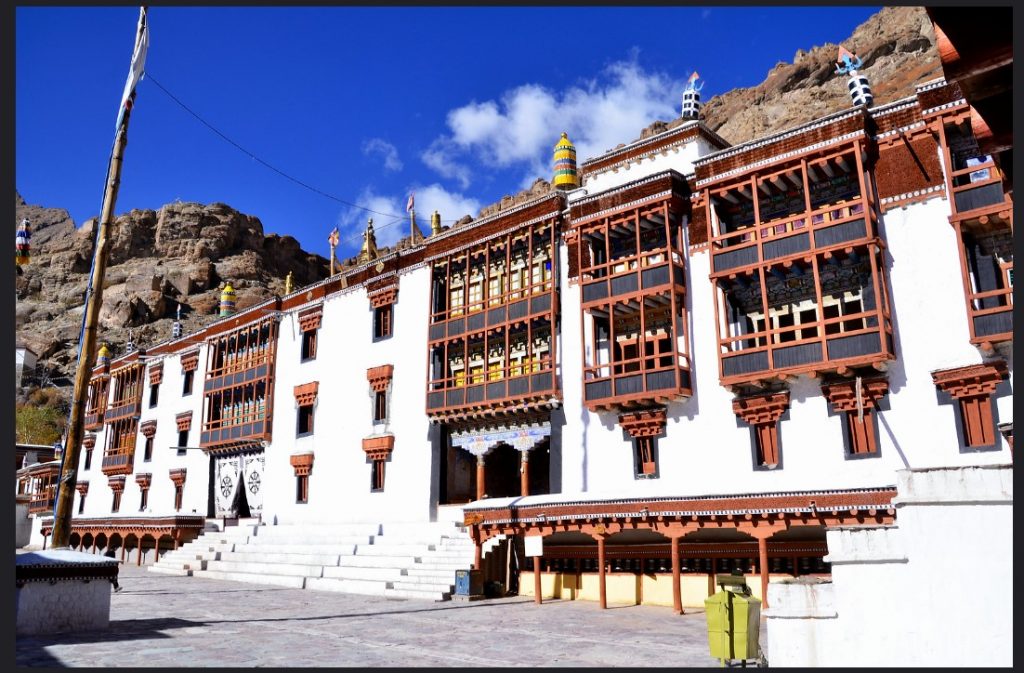
The Hemis Monastery is the richest monastery in Leh and Tibet, its construction was commissioned by the then King Sengge Namgyal. It is believed that he gave the estate of the Hemis to the Lama Stagtsang Raspa in 1630. In 1632, the construction of various rooms and halls began especially Tsog Khang which is the meeting hall for the monks. It is also the largest monastery in the Leh region and is located at a distance of 53 Km from Leh. It is situated on the southern banks of the Indus river, making it a more mesmerizing and beautiful place to visit.
The monastery has two rooms dedicated to a special purpose – Lhamokhang, which houses the protector deity called Paldo Lhamo, and Guru Lakhang, which houses an 8-meter-high statue of Guru Padmasambhava.
The monastery is surrounded by beautiful colorful flags from all sides. The praying flags are of great importance in Buddhism, it is believed that the fluttering of the flags is a way to send prayers to the lord Buddha.
However, the major point of attraction is the Annual Tsechu, famously known as the Hemis festival, which is dedicated to Guru Padmasambhava, this two-day event is held in the month of June and July. During the festival, cham dance is performed on the beats and rhythm of drums and cymbals. The giant Thangkas (Buddhist paintings) are flared for the common people.
The monastery also houses a museum, where centuries-old paintings are displayed for the public. Tourists from all over the world visit Hemis Monastery to learn about Buddhism and witness statues and paintings of Buddhist gods and goddesses in order to seek their blessings.
Spituk Monastery

Another beautiful Buddhist monastery that captures the attention of many tourists is Spituk Monastery which is also called Spituk Gompa or Pethup Gompa. It was built in the 11th century by Od-de and presently serves as a home for around 100 monks. The monastery is situated at a distance of 11 km from Leh. It has a school that is restricted to tourists and also houses a reflection hall where visitors can sit and pray as per their feasibility. There is an assembly hall in the monastery called Dukhang and it also houses small temples called Dolma Lakhang and Chokhang shrine.
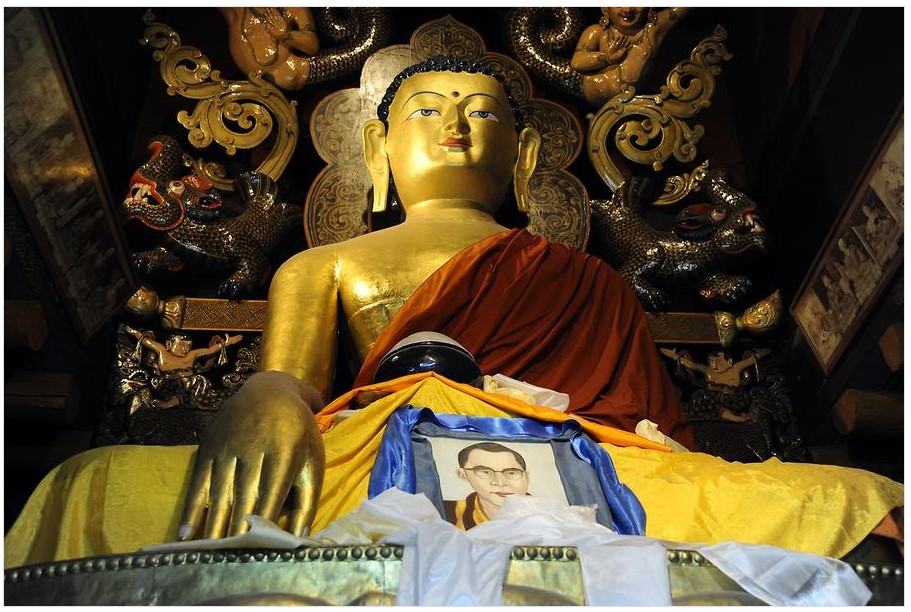
The monastery has outstandingly preserved the cultural heritage of Buddhism. The oldest of artifacts and statues, murals are in the best of the condition here. Furthermore, paintings of the reincarnation of the Lord Buddha can be seen on the wall, which lures tourists from far away. Apart from this, the monastery also showcases ancient idols, scriptures, and relics.
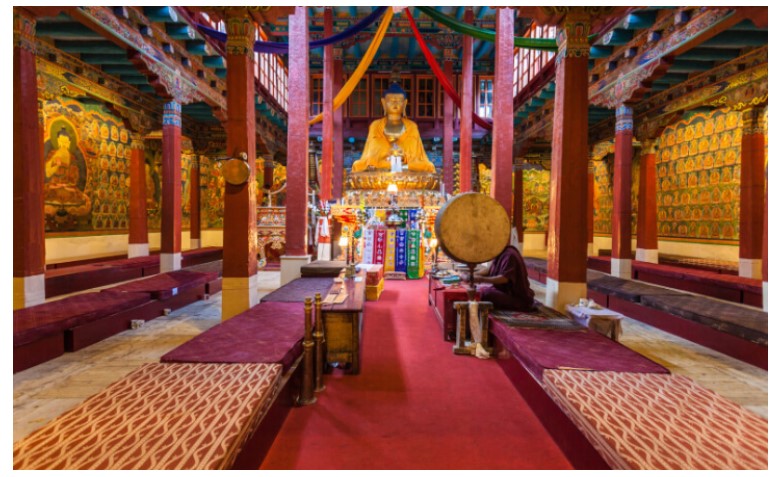
The head lama of Spituk is also considered the head lama of Ladakh. Spituk attracts tourists for its annual Spituk Gustor festival which is held in the month of January and February. The festival is celebrated to promote world peace and harmony among the people. It is advised to visit the monastery during the afternoon to admire the beauty of the place and its surroundings.
Thiksey Monastery
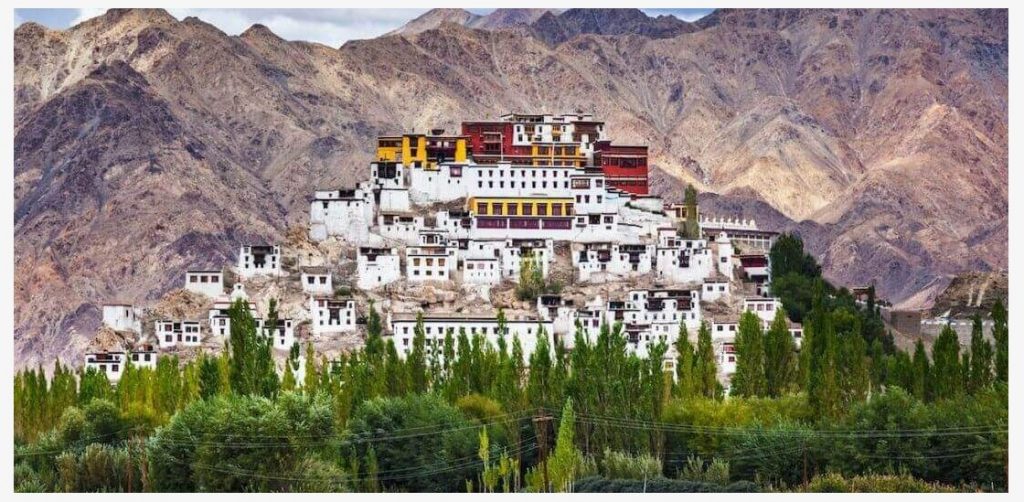
One of the largest monasteries in Central Ladakh is Thiksey Monastery. It is located at a distance of 14 km from Leh. It was built in 1430 AD by Sherab Zangpo. The monastery houses 10 temples and also has an alluring statue of Maitreya Buddha which is 14 meters high. The statue was built to commemorate the visit of the 14th Dalai Lama in 1970.
The monastery has a Lamo Khang which is dedicated to the protector deity Paldo Lama. Along with it, there is a temple dedicated to the goddess Tara. Tourists are allowed to attend the morning prayer which is followed by the sutras chanting (chanting of sacred Buddhist teachings).
The annual festival is held in the month of October or November, where the cham and mask dance is performed. During the festival, a trade fair is also conducted at the base of the monastery where the common public also participates.
Diskit Monastery
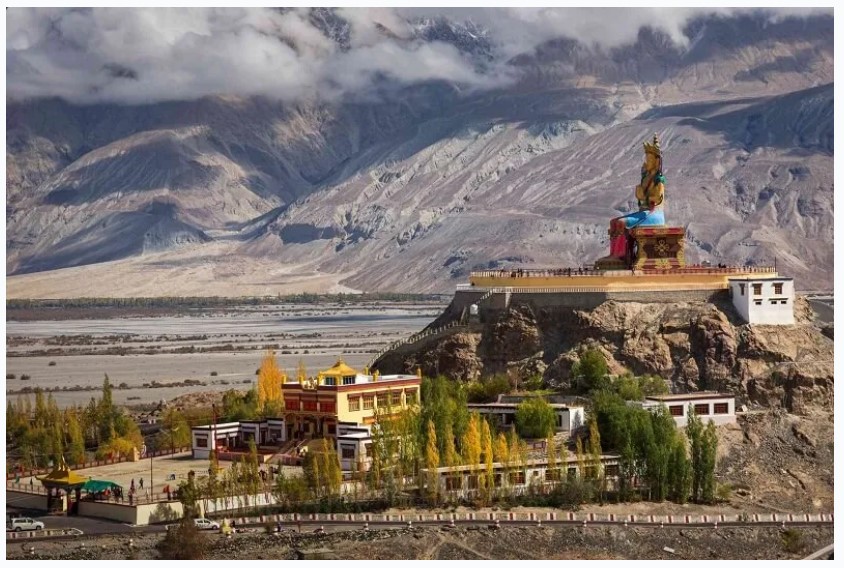
The Diskit Monastery sits quietly in the valley of flowers i.e. Nubra valley. It was founded by Changzem Tsera Zangpo in the 14th century. It is the oldest gompa in this region and is the subsidiary of Thiksey monastery. It is situated at a distance of 114 km from Leh; tourists are advised to take a cab for traveling.
This eye-catching monastery is divided into three parts, first portion comprises Old Dukhang (Assembly hall) and Old Zimshung (Noble room) which is reserved for the Lamas. The second part of the monastery consists of the New Dukhang and a New Zimshung, however, the last portion of the monastery is the oldest part which houses a prayer room where all the lamas pray and a Rabsal (wooden balcony).
Here, you will get to witness the antique Buddha images and the pictures of the sacred deities. The annual festival known as “Dosmoche” or “festival of the scapegoat,” is held in the month of February. People from the Nubra valley attend the festival in large numbers and celebrate it.
Likir Monastery
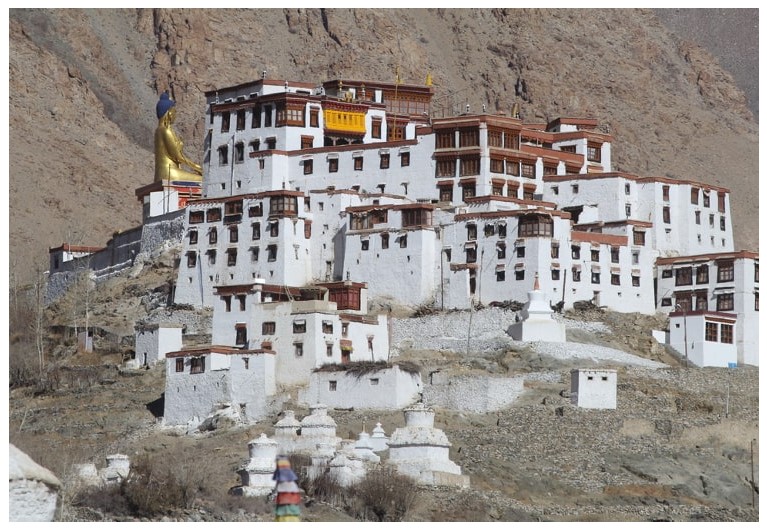
Next on our list is the breathtaking Likir Monastery. It is at a distance of around 60 km from the town of Leh. The monastery was established in 1065 by Lama Duwang Chosje. The location of the monastery has attracted tourists from far away. The premise of the monastery was extended during 15the century, however, the gompa we see today was built in the 18th century as the earlier one was destroyed by fire.
The monastery has a museum that showcases Buddhist relics and artifacts. It houses two Dukhangs, the old one carries statues of Amitabh Buddha, Shakyamuni Buddha, Maitreya, and Je Tsongkhapa, and the new Dukhang has a statue of Avalokiteshvara.
Located in the beautiful abode of mountains and lush valleys, Likir offers a peaceful and harmonious environment to tourists. People who are on a spiritual retreat often come to this place to seek wisdom and guidance from the Monks.
Alchi Monastery
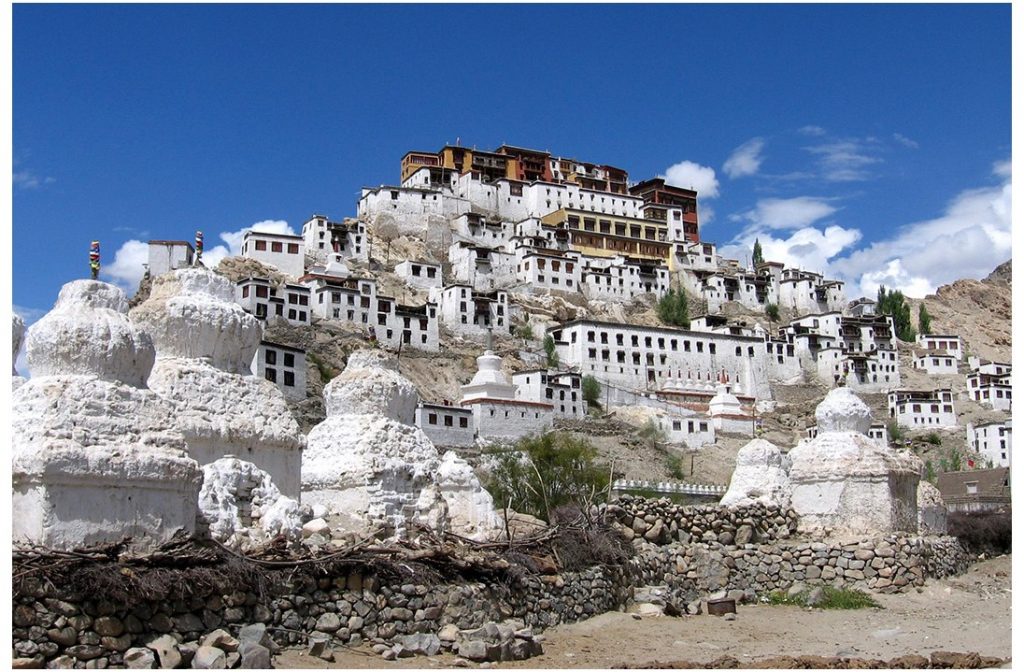
Resting peacefully in the abode of mountains, Alchi Monastery is located in Alchi village. It is situated at a distance of 65 km from Leh. It is believed that the foundation of the monastery was laid by the Tibetan scholar Rinchen Zangpo between 958 and 1055. However, as per the ancient Buddhist inscriptions, the construction of the monastery is credited to another Tibetan noble – Kal-dan Shes-rab in the 11th century.
The monastery houses three temples, first one is Dukhang (Assembly hall) where monks worship and perform various ceremonies. The second temple is popular for its four-armed Bodhisattva Statue and is called Sumstek. The third structure of the monastery is the Majunshri temple, which is also called Jampe Khakang. The temple houses a painting of Rinchen Zangpo.
The monastery is an amalgamation of both the Buddhist and the Kashmiri styles. The wall paintings inside the monastery also show fragments of the time when the Hindu kings ruled the land of Ladakh. The artistic depiction of the Buddha kings can be seen in Alchi. Alchi monastery is also home to the oldest paintings in Ladakh.
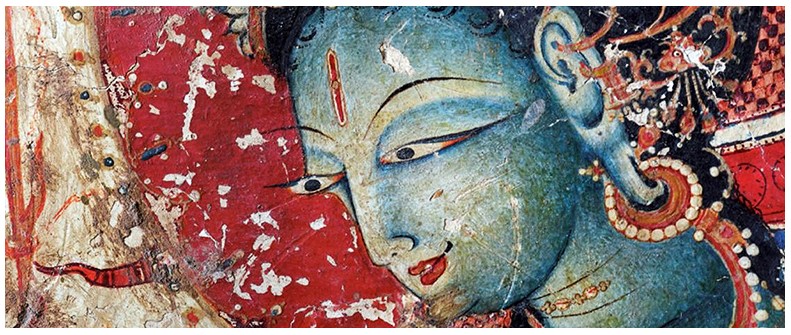
Alchi attracts tourists and wisdom-seekers from around the world. The location of the monastery also serves as a perfect spot for adventure enthusiasts as the monastery is close to the Zanskar river where various adventure sports are performed like river rafting.
Lamayuru Monastery
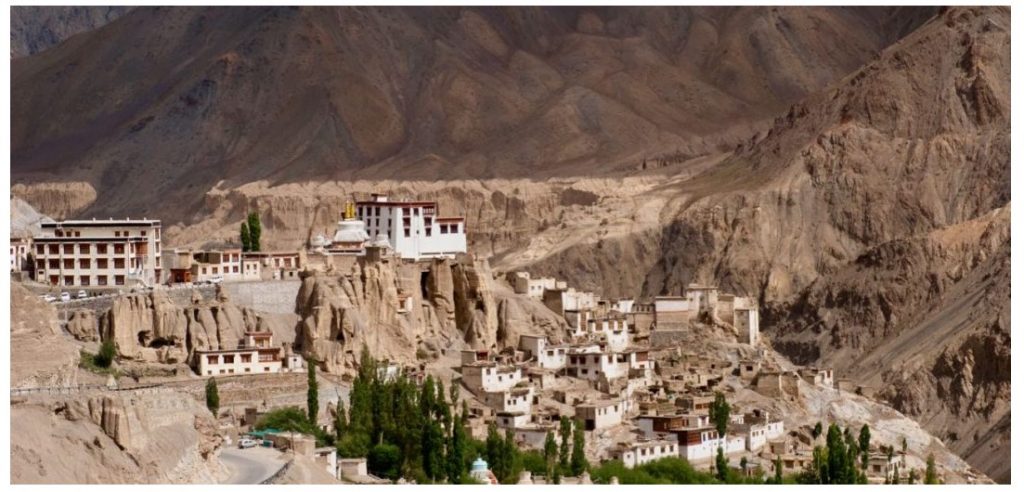
Lamayuru or Yuru monastery also called Tharpa Ling (place of freedom) is known for its picturesque location, enchanting sights, mesmerizing terrains, and devoted monks. The monastery is situated at a distance of 125 km from Leh and is home to 150 monks. It is also called the moonland of Ladakh because of its moon-like terrain.
It is believed that the foundation of the monastery was laid by Naropa, a Buddhist scholar in the 11th century. Earlier, the monastery has five huge buildings under it but today, only one building has survived. The monastery has a few temples like Sengge Lhakhang temple, Gonkhang temple, and the Dukhang (assembly hall) which also has a small cave inside where Naropa meditated for several years. The inside walls of the monastery are painted with murals that depict how a lama should live.
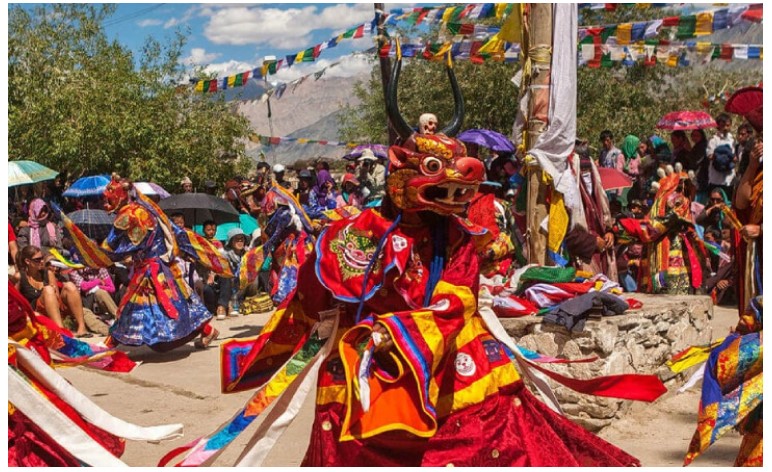
There are many things that lure tourists here, one of which is the Yuru Kabgyat festival. This two-day festival is famously called the Mask festival for the unique mask dances and sacred ceremonies that are performed during this time. It is held between July and August. Monks from various parts of the world attend this festival.
Apart from this, one can go for treks to nearby places like Wanla. The monastery also serves as a great place for people looking for peace and harmony.
Phugtal Monastery
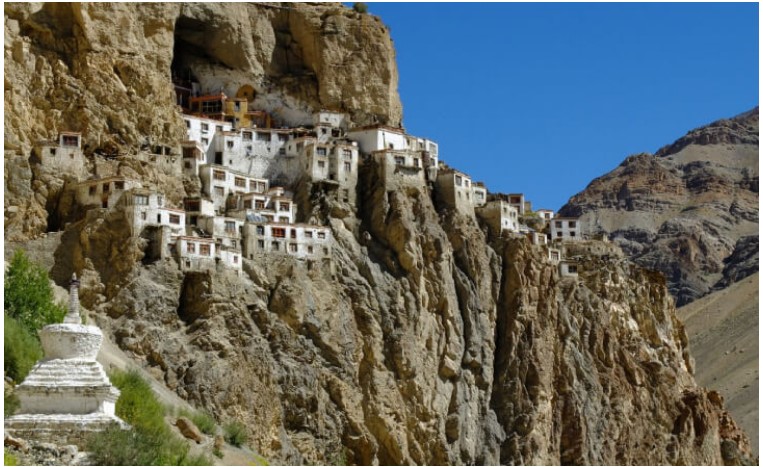
One of the most isolated and remote monasteries in Ladakh is Phugtal Monastery, which is located in the isolated town of Phuktal or Phugtal. It is also called Phutkal Monastery or Phutkal Gompa.
The monastery was founded by Gangsem Sherap Sampo in the 12th century. It is built around a natural cave hence, also called a cave monastery or cave gompa. One can reach this place only on foot, the nearest town is Padum, from where one can reach the Lchar by road and then treks to the monastery. The trek takes one through lush green vegetation, scenic views, and silent barren landscapes. It offers an offbeat experience to the tourist which is no less than an adventure activity.
The monastery is dedicated to the followers of Buddha, like the Arhats and Guru Padmasambhava. The monastery has the main temple, prayer rooms, living quarters, and a sacred spring. There are around 100 monks residing in this monastery.
Phugtal celebrates a wide range of festivals, all of which are of great significance in Buddhism. Festivals begin around February and are celebrated year-round. Festivals like Smonlam Chenmo (which signifies the start of the New Year), Chudsum Chodpa, Chonga Chodpa, Yarnas, etc. During the time of the festivals, the monks interact with the local people or the nearby villagers. It is through these festivals that they spread the teachings of the Buddha and the religion.
Stakna Monastery
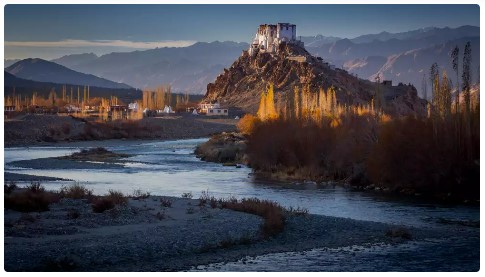
Next is the Stakna monastery also known as the Tiger’s Nose Monastery because of the shape of the rock it is built on. It was founded in the 16th century by Bhutanese scholar Chosje Modzin. It is located at a distance of 25 km from Leh.
The monastery offers in deep-knowledge about Buddhism. It has a huge assembly hall called Dukhang, which houses beautiful paintings of the Sakyamuni, Amchi, and Tsephakmad. The monastery is home to around 30 monks. The statue of Arya Avalokitesvara was brought from Kamrup, Assam, and is a major point of attraction among tourists.
The location of the monastery offers its tourists a panoramic view of the surroundings. One can enjoy the amazing view of the Indus river from the rooftop of the monastery.
Stok Monastery
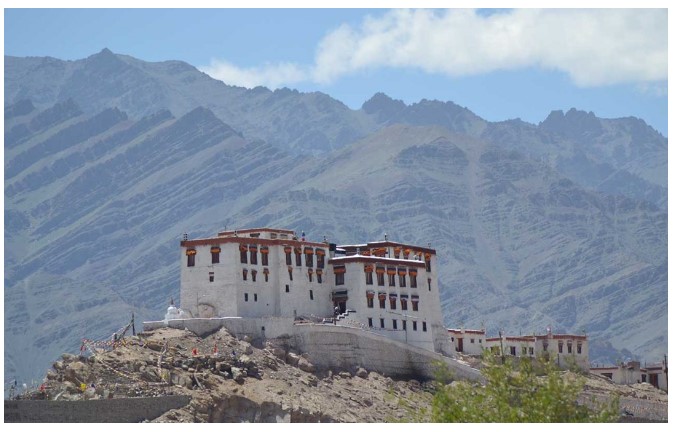
The Stok monastery was founded by the Lama Lhawang Lotus in the 14th century. It is situated at a distance of 15 km from Leh. The monastery is famous for its library which has the sacred 108 volumes of Buddha’s teachings called Kangyur.
The monastery has a main assembly hall where monks worship and pray. It is painted with beautiful colors and the nearby rooms are decorated with banners. At the entrance, one can witness the paintings of the guardian divine figures. It has various paintings of Gods and Goddesses. There is a huge image of Avalokitesvara which is displayed in the new temple and has around 1000 arms (it is to depict the strength of the lord) and 11 heads. The oldest part of the monastery is believed to be 550 years old whereas the Dukhang is just 50 years old.
The monastery celebrates an annual festival called mask festival where different dance forms are performed. The festival is also popular for the scrumptious meals prepared during the festival and for the soothing music.
The areas near the monastery offer plenty of trekking spots along with the famous Stok Kangri mountain range which is a hit spot among adventure-seekers. Tourists also visit the Stok Palace which is situated at a distance of 2 km from the monastery. The palace was constructed in 1820 and still serves as a home for the royal family of Ladakh.
Buddhist culture goes way back in the history of Ladakh and is still present in the air of this region. The Buddhist monasteries which were established hundreds and thousands of years ago are still working in order to spread the teachings of Lord Buddha. The essence of Buddhism could be seen in the locals who religiously participate in the festivals held by every year. Ladakh serves as an important Buddhist center in India along with other Indian states. We hope this was an insightful read for you and would help you in exploring these monasteries on your next visit to Ladakh!
